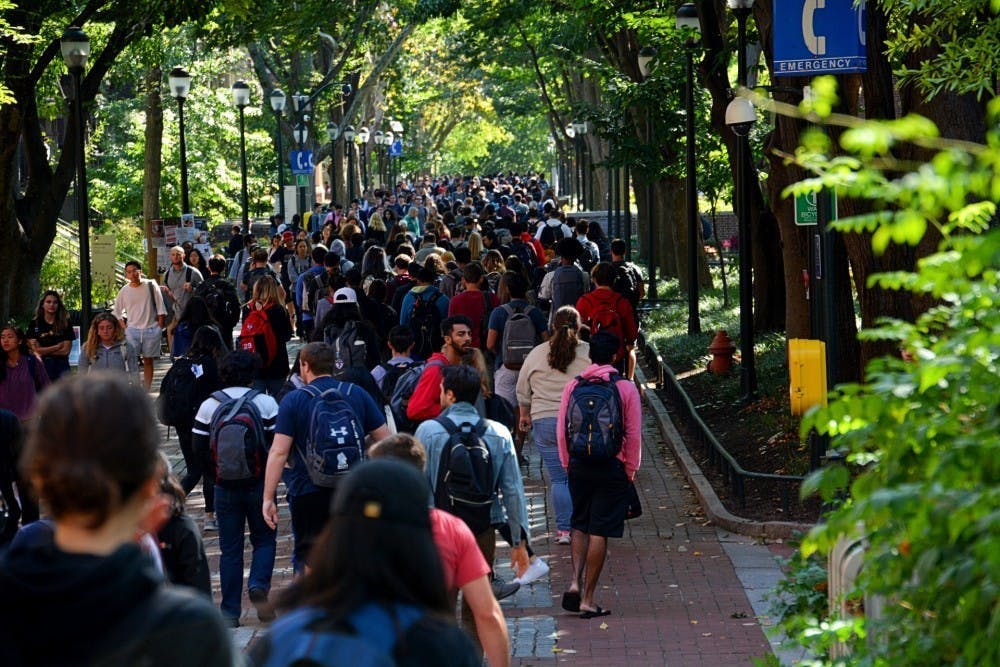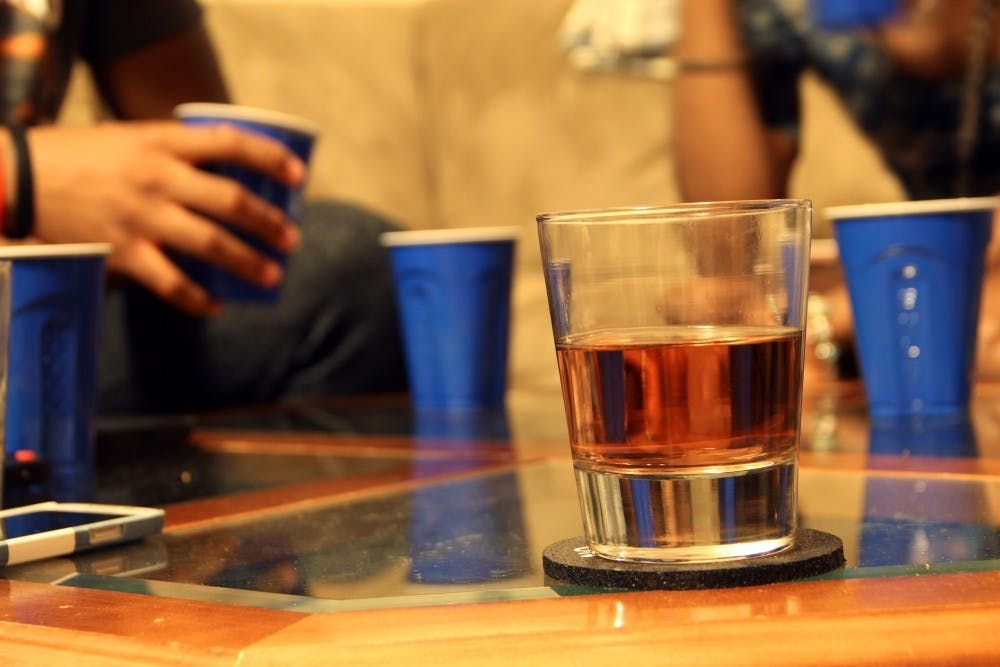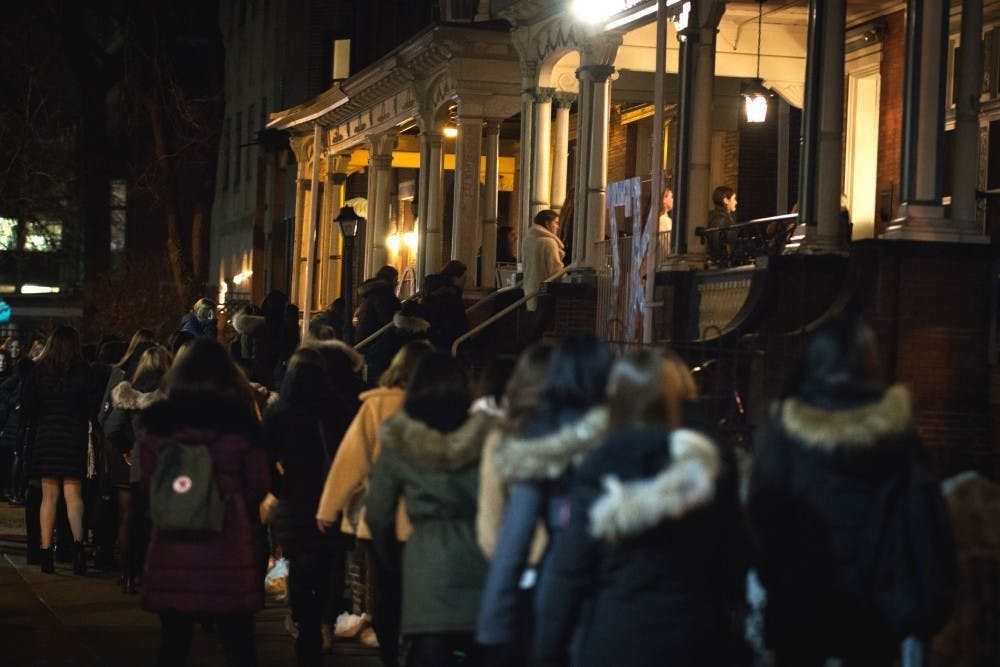“This will pass over soon. We’ll be able to hang out like normal by July, and we’ll definitely come back to school in the fall.”
This is what I told my friend on a call in March. After leaving Penn in the middle of spring break, I went back home to Tennessee to take online classes, disappointed but hopeful that quarantine would quickly become a memory.
Then, in April, I read about anti–lockdown protests spurred on by the president, who refused to wear a mask in public. In May, I heard about crowds pouring into restaurants, malls and beaches as states pushed to reopen. In June, I saw daily case counts rising in my state and across the country. Now, in July, the United States has had 3.6 million total cases and nearly 140,000 deaths.
Failure after failure by state and federal governments to contain the virus make my words in March seem painfully ironic. The only thing I got right was that we are indeed coming back to campus in the fall. But the excitement I had to return in March has been replaced with dread.
Like many universities, Penn is reopening its campus with a hybrid model for the fall semester. The university promises strict rules for social distancing in classes, dorms, and on campus, but it’s inevitable that students will have social contact outside of the purview of the university, whether it’s in off–campus apartments or on trips around Philadelphia. A huge unknown—one that could derail all efforts to contain an outbreak—is our own behavior. Will students social distance, and will it be enough to stop mass infections on campus?
I spoke with Penn students about their expectations for social life next semester. The consensus: in the absence of strict rules for behavior outside of classes, people don’t know what hard limits they should place on themselves and their friends. Everyone has a different threshold for the risks they’re willing to take, and some are willing to go further if it means finding community after months of social isolation. But, according to experts, the consequences of any leniency could be catastrophic.

Locust Walk, pre-pandemic. Photo: Melanie Hilman
The risks of going back to campus have been on the mind of Eliana Waxman (C ‘21), who will be moving from her home in Chicago into an off–campus studio apartment in the fall. Although she doesn’t know yet if any of her classes will meet in person, she wants to have the option of learning face–to–face. Still, it wasn’t an easy decision. She’s worried that living in a big city will increase the likelihood of an outbreak, as students and residents will inevitably mingle in grocery stores, restaurants, and on the street. But the chance to see her friends and make the most of their senior year together ultimately persuaded her to come back.
“I think that if even a couple [of my friends] said that they weren't going to be back on campus, I wouldn't have gone back to campus, either,” she says. “But just knowing that all the seniors I spent the last three years with are going to be there made me feel like it was important to go back.”
Cameron Vaziri (W ‘21) has also decided that the pros of returning to his off–campus apartment outweigh the risks, given that cases in Philadelphia continue to stay low. He thinks he’ll be more productive and independent at Penn than at his home in Napa, California, and he’s looking forward to spending time with his three roommates and other close friends.
“It comes down to trade offs. What level of risk are you willing to live with in order to have other things that you value?” he says. “I acknowledge that the chances of me getting COVID if I go back are higher than they are here, but I think that the odds don't shift enough to justify me not going back with all the other factors."
As off–campus students, both Eliana and Cameron are in a tricky position: unlike students living in a dorm, both will have much greater freedom to socialize in their own homes, but they don’t want to risk spreading the virus. For Eliana, the process of deciding what kind of rules to place on herself has been difficult, especially when she thinks about the logistics of having visitors, all things she previously took for granted. Will they have to stand six feet apart at all times? Is it safe to share a meal together, and should she let them use her plates and cups? Although Eliana doesn’t have all the answers yet, she knows she’ll have to figure it out if she wants to see her friends.
“Living alone, I know that it's unrealistic to expect myself to not see anyone ever,” she says. “You can't expect someone to live completely isolated for four months, sit in front of a screen and do work, and then sit in front of a screen to talk to people when your friends are down the block.”
For now, Eliana wants to have two people maximum visiting her apartment at a time. She’ll also try to socialize more outdoors, and she’ll steer clear of inviting any friends who are going to parties or behaving irresponsibly.
“Trying not to mix people from different households will be really important, so I wouldn't invite a friend of mine who's living in a house of seven people with another friend who's living in an apartment with three roommates,” she says.
But Nancy Yang (C ‘21) is skeptical that these precautions will actually work. She’s going to take her fall classes remotely from her home in Palo Alto, California for financial and personal reasons, but a big part of her decision was not wanting to contract the virus. With case counts rising in several states, Nancy thinks it’s inevitable that Penn students from across the country will bring the virus with them when they travel to campus and continue to spread it through socialization.
Vincent Paik (C ‘22) has also decided to stay at home in the suburbs of Philadelphia for the fall semester and take online classes. He’s most concerned about how students will behave when they drink and party, which he believes will continue during the pandemic.
“I think that people will adhere to the guidelines during normal class hours,” he says. “On the weekends, people would definitely be more likely to disobey guidelines and do what they want and say that they deserve to have fun."

There is no “safe” number of social contacts, says Philip Gressman, math professor and coauthor of a working paper modeling COVID–19 spread on college campuses. The study simulated the effects of various strategies to mitigate outbreaks on a hypothetical residential campus of 20,000 students and 2,500 professors over 100 days.
With “standard intervention” by the university—which consists of quarantine, contact tracing, universal mask wearing, daily randomized testing, and moving classes of 30 or more students online—cumulative infections remained below 66 people in 95 percent of simulations. But a crucial part of reducing infections in the model is “student’s ability and willingness to refrain from nearly all social contact,” according to Gressman.
The model looked at the effects of increasing social contacts from two people per student per day to 17 and found that median cumulative infections would increase from 44 to 461, even with standard intervention strategies. In the worst case scenario of 17 social contacts, as many as 2,500 students could be in quarantine at a time.
"Even small social gatherings are going to increase the risk, and they're going to increase the risk more than it seems like they would,” he says. “If you think about it, you're like, 'Oh, it's just one or two people,' but when you have 20,000 students each having contact with one or two people, this creates a lot of opportunities for transmission on a given day.”
The model doesn’t map perfectly onto Penn’s situation, since it assumes all students live in dorms with one roommate they interact with every day. Gressman expects that the infection rate at Penn will be “somewhat worse” because a large number of students live off campus, and many people on and off campus will have multiple roommates.
One of his major concerns for the fall is whether students will continue to social distance over time, especially since many necessary policies, such as wearing a mask and staying six feet apart at all times, are inherently uncomfortable.
"If it's working, you won't see the need, and that's dangerous because then people will say, 'Well if there are no cases, why are we doing all this?'” he says. “I think it's going to be a problem which is just perfectly designed to test the limits of human behavior."

Spring 2018 sorority rush. Photo: Julio Sosa
To enforce social distancing, Penn has come out with the Student Campus Compact, a written agreement that asks students to avoid bringing guests to their dorms and “refrain from organizing, hosting, or attending events, parties, or other social gatherings off–campus.” The university will also establish a review panel to investigate violations of the Compact and decide on possible consequences. Chief Wellness Officer Benoit Dubé told the Daily Pennsylvanian that details about the panel haven’t been sorted out yet, but students wouldn’t face academic probation or expulsion for breaking the Compact. They may, however, have their PennCards deactivated so they can’t enter Penn buildings.
Outside of the Campus Compact, Associate Professor of Nursing Alison Buttenheim thinks Penn’s education and communication strategies will be crucial in encouraging students to social distance. Buttenheim’s research centers on behavioral economics and health decision–making. In the context of the pandemic, she says there are several patterns of behavior that people, especially young adults, fall into that can make it difficult to convince them to social distance.
The first is that young people are heavily influenced by social norms; if students feel like all their peers are going to parties or not wearing their masks, then they’re much more likely to follow their footsteps. Another is that they’re more focused on the present and the concrete, as opposed to the “probabilistic” and “intangible,” notes Buttenheim. This is a big challenge with COVID–19, since people often can’t see how their actions will directly contribute to increasing infections.
“We think about our individual behavior, and we rarely are able to scale that up to population level effects,” Buttenheim says. “It's easy to say, ‘What does it matter if I take off my mask right now for a couple of hours?’ But it's absolutely the case that all those collective behaviors will produce conditions for the virus to spread.”
Penn will have to figure out a way to communicate the definite value of social distancing and make it “so easy and habitual” that people won’t even think about breaking the rules. Buttenheim says one solution could be collaborating with student leaders and campus organizations in messaging campaigns to encourage responsible behavior, which might make students feel pressured to conform.
Dubé said in an email that university administrators are working on social media campaigns to educate students, and they’re also looking into stationing public health ambassadors on Locust Walk and across campus to remind people to social distance.
But no matter what strategies Penn uses next semester, almost everyone I spoke to agreed that there will still be people who will behave irresponsibly. Cameron doubts that the Campus Compact and review panel will have any power over off–campus students who break social distancing, since they can’t be evicted even if they’re banned from going into Penn buildings. And Eliana thinks that since many people already don’t follow university guidelines on student behavior, it’s hard to imagine that next semester will be any different.
“Penn has a lot of rules about a lot of things,” she says. “Penn might say, ‘Don't have a party where you can give alcohol to people under 21.’ Obviously lots of people do that. It's a norm.”
In a recent poll of 800 college students, 79% said that they won’t go to parties in the fall. That means 21% might, and that’s the problem: even if only a small fraction of students break social distancing, or a larger fraction breaks social distancing only some of the time, these small lapses may be enough to cause an outbreak. COVID–19 spreads through communities with frightening ease. A single positive case can infect dozens and kill multiple people. Will the actions of the 79% matter if 21% end up spreading the virus through their behavior?
“One of the things that we've seen from our model is that there are 1000 ways that this thing can go wrong, and only a few ways that it can work,” says Gressman. “Everybody is going to do their best, but it's just not yet clear if our best is good enough.”
I’ve been thinking about Professor Gressman’s words a lot as the fall semester gets closer. As excited as I was in March to come back to campus, I’ve grown more and more worried that nothing short of keeping campuses across the country closed will prevent massive outbreaks. The failure of federal and state governments to enforce social distancing has robbed us of the chance to safely continue our education like students in many other countries have been able to do. But now that Penn has decided to reopen, a lot of students have practical, financial, and personal reasons for returning to campus, myself included.
Those of us coming back have to hold ourselves accountable for our actions both on and off campus. It’s not our fault that we’re in this situation, but it will be our fault if we don’t do everything we can to keep infections low on campus. The path of the virus is invisible, so we have to assume that we risk spreading it with every conversation, handshake, meal, and hug we choose to share with our peers. We have to have hard conversations with our roommates, friends, and significant others about our limits. We have to accept that we’ll be unhappy and even lonely despite being on campus. Why? Because there are 1000 ways for things to go wrong, and our best might not even be good enough.
